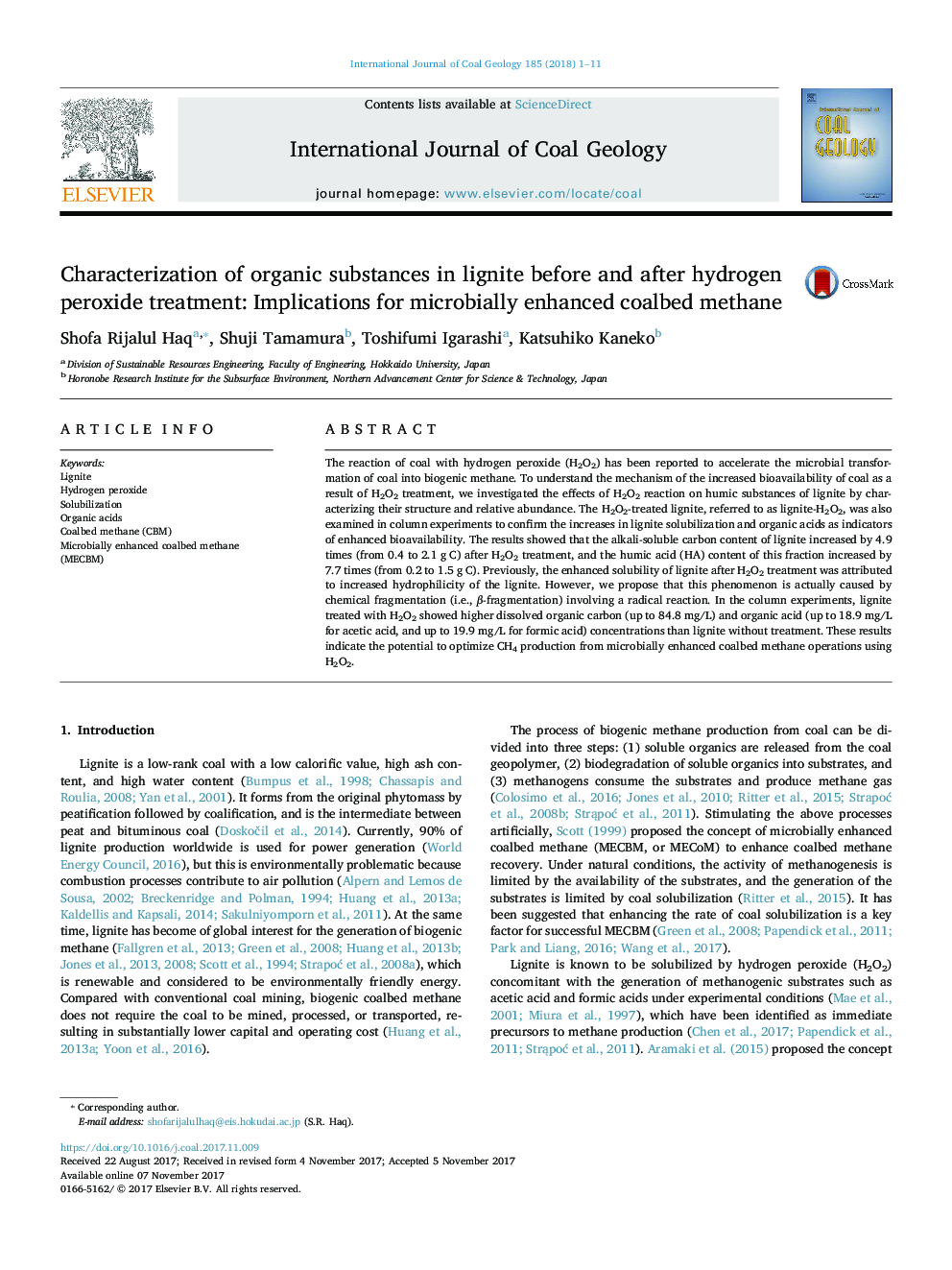| Article ID | Journal | Published Year | Pages | File Type |
|---|---|---|---|---|
| 8123611 | International Journal of Coal Geology | 2018 | 11 Pages |
Abstract
The reaction of coal with hydrogen peroxide (H2O2) has been reported to accelerate the microbial transformation of coal into biogenic methane. To understand the mechanism of the increased bioavailability of coal as a result of H2O2 treatment, we investigated the effects of H2O2 reaction on humic substances of lignite by characterizing their structure and relative abundance. The H2O2-treated lignite, referred to as lignite-H2O2, was also examined in column experiments to confirm the increases in lignite solubilization and organic acids as indicators of enhanced bioavailability. The results showed that the alkali-soluble carbon content of lignite increased by 4.9 times (from 0.4 to 2.1 g C) after H2O2 treatment, and the humic acid (HA) content of this fraction increased by 7.7 times (from 0.2 to 1.5 g C). Previously, the enhanced solubility of lignite after H2O2 treatment was attributed to increased hydrophilicity of the lignite. However, we propose that this phenomenon is actually caused by chemical fragmentation (i.e., β-fragmentation) involving a radical reaction. In the column experiments, lignite treated with H2O2 showed higher dissolved organic carbon (up to 84.8 mg/L) and organic acid (up to 18.9 mg/L for acetic acid, and up to 19.9 mg/L for formic acid) concentrations than lignite without treatment. These results indicate the potential to optimize CH4 production from microbially enhanced coalbed methane operations using H2O2.
Related Topics
Physical Sciences and Engineering
Earth and Planetary Sciences
Economic Geology
Authors
Shofa Rijalul Haq, Shuji Tamamura, Toshifumi Igarashi, Katsuhiko Kaneko,
